
Ein paar Kilometer südlich der Pinguin-Kolonie auf Valdés ist der Parador La Elvira (Hotel- und Restaurant) mit großen Aussichtsplattformen auf der Steilküste. Hier überblicken wir eine See-Elefanten-Kolonie. Bei Ebbe ist eine große Sandbank trocken gefallen. Zwischen Kliff und Sandbank liegen sie regungslos auf dem Strand. Gelegentlich brüllt eines der Tiere. Ein paar große Männchen werfen dösend alle paar Minuten Sand bzw. Kies auf ihren Bauch.
Elephant seals
A few kilometres south of the penguin colony on Valdés is the Parador La Elvira (hotel and restaurant) with large viewing platforms on the cliff. Here we overlook an elephant seal colony. At low tide, a large sandbank has dried out. Between the cliff and the sandbank they lie motionless on the beach. Occasionally one of the animals roars. A few large males snooze and throw sand or gravel on their bellies every few minutes.

.
.

.
.

.
.
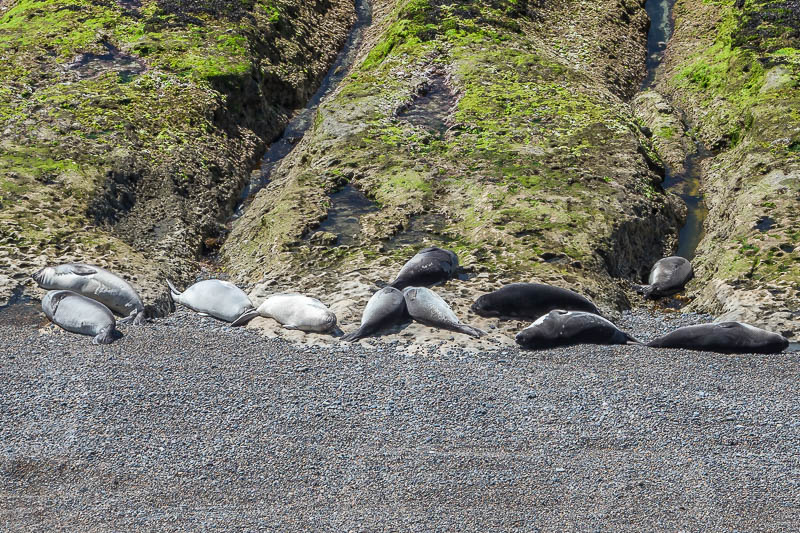
.
.

.
.
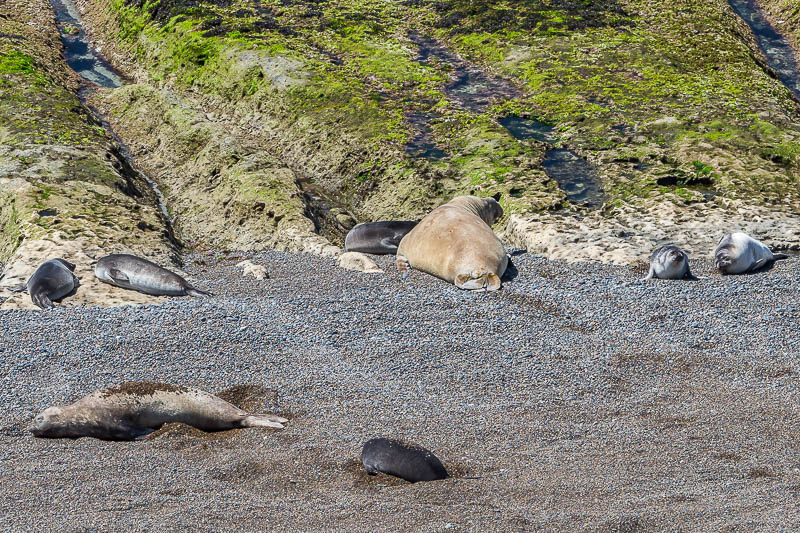
.
.

.
.

.
.
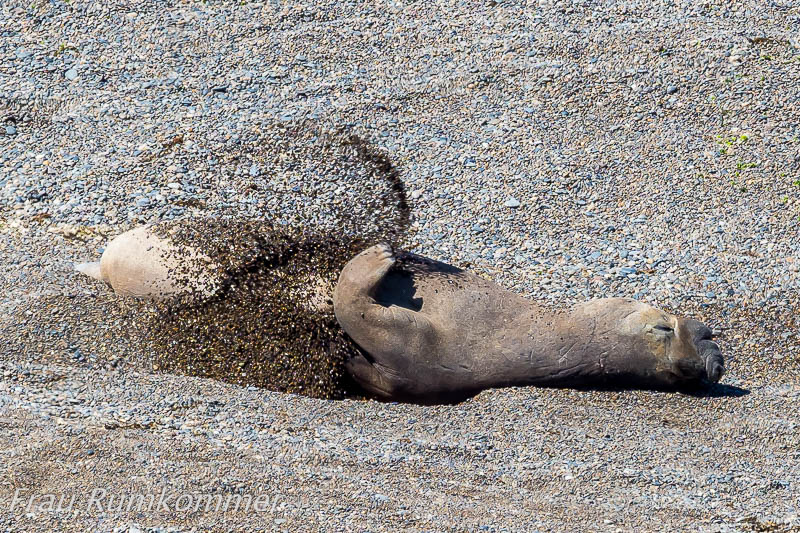
.
Drei Stunden später kommen wir nochmal zu dieser Aussicht. Jetzt ist die Sandbank unter dem auflaufenden Wasser verschwunden. Einige See-Elefanten schlafen immer noch. Gruppen der Weibchen oder Jungtiere vom Vorjahr und einzelne Männchen tummeln sich im Meer.
Three hours later we come to this view again. Now the sandbank has disappeared under the rising water. Some elephant seals are still sleeping. Groups of females or juveniles from last year and single males cavort in the sea.

.
.

.
.
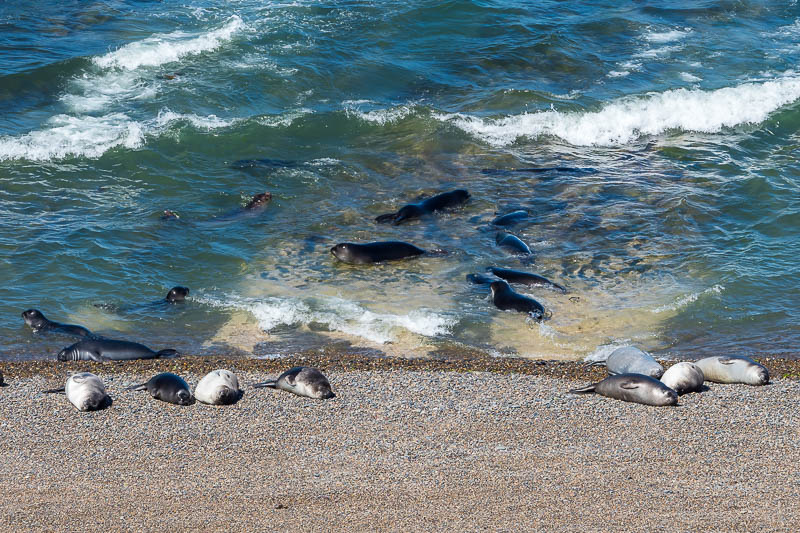
.
.

.
.
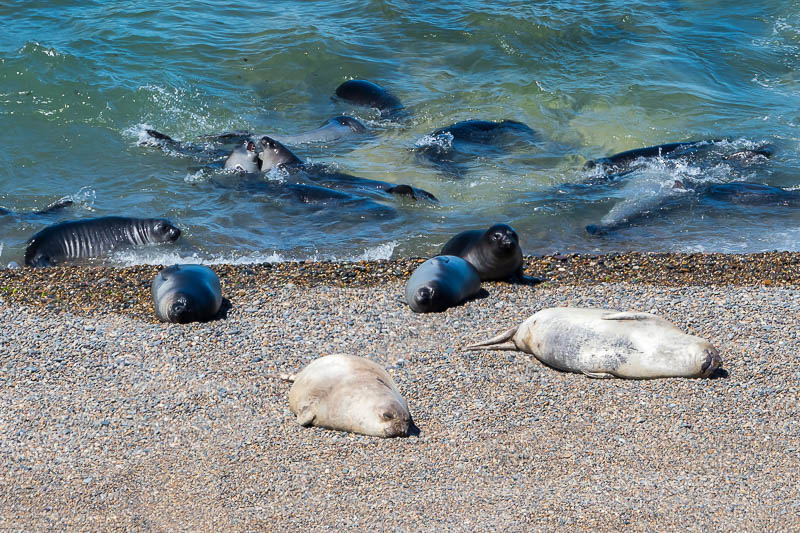
.
.

.
.

.
.

.
.

.
.

.
.

.
.

,
.

.
.

.
.

.
.

.
.
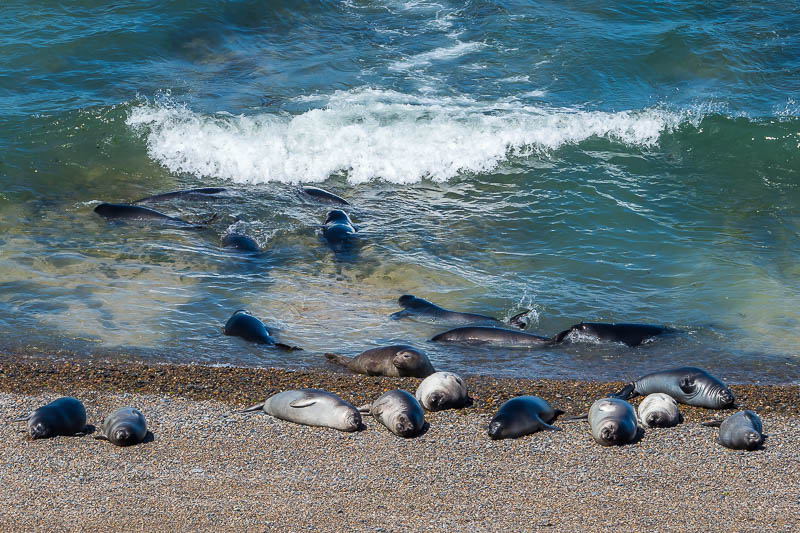
.
.
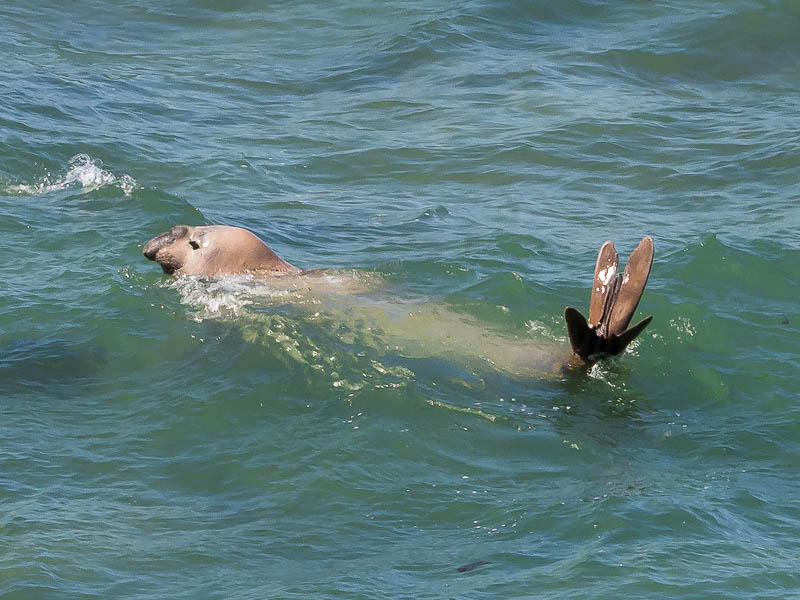
.
.

.